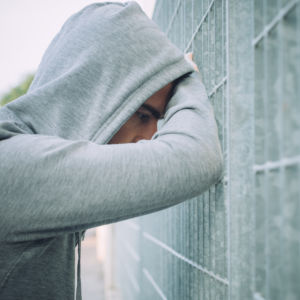There were 27 violent incidents for every 1,000 middle school students during the 2015-2016 school year, according to a newly released federal survey on crime and safety in American public schools. The rates for high schools and elementary schools were lower, at 16 and 15 incidents per 1,000 students, respectively. Across the board, the updated rates of violence in schools mark a clear drop from previously reported statistics.
The National Center of Education Statistics released the findings this week from their survey of public school principals on “Crime, Violence, Discipline, and Safety in U.S. Public Schools.” The sampling of over 2,000 principals was adjusted to make the survey representative of regional, socio-economic, and racial differences among schools, and was administered by the Virginia-based nonprofit, the American Institutes for Research. The last time the survey had been conducted, which also includes unweighted responses from public charter schools, was during the 2010-2011 school year.
The report also included the news that only a quarter of schools reported “at least one incident of the distribution, possession, or use of illegal drugs.” The numbers for incidents involving alcohol or prescription drugs were even lower, affecting only 13 and 10 percent of schools, respectively. The findings on drug and alcohol use are not hugely different from the findings gathered when the survey was last conducted. In 2010-2011, incidents involving alcohol were reported in 14 percent of schools, and incidents involving illegal drugs were slightly lower than current rates at 24.6 percent.
Meanwhile, the rates of violence in schools from the most recent survey are down significantly from the 2010-2011 school year. At that time, schools were reporting 40 violent incidents per every 1,000 middle school students, and a rate of 21 incidents per sample group in both elementary and high schools.
The self-reported nature of the survey could potentially be coloring these statistics at the margins. In theory, some principals could have put a spin on their responses in an effort to show their schools in a better light. In an email, Rachel Hansen, the Education Department program officer for the study, acknowledged that the report “is a self-administered survey which means it’s possible that respondents could report inaccurate data.”
On the other hand, Hansen cited research arguing that such distortions are least prevalent in self-administered surveys and that the Education Department ensures the confidentiality of the principal’s responses. The department also does statistical analysis of the surveys to ensure that they are in line with prior year statistics. For these reasons, Hansen wrote that the officials have a “high level of confidence in the data we have collected and reported in the report.”
The report also found that suburban and urban schools were more likely to have social emotional learning training for students than more rural schools. Unsurprisingly, schools with larger enrollment numbers are more likely to have a School Resources Officer (a law enforcement officer) visit their campus regularly. Finally, and perhaps more surprisingly, schools in towns and suburbs were more likely to have armed law enforcement officers on school grounds than schools in cities.
The release of the report comes on the heels of a letter sent by a number of Democratic lawmakers urging the Secretary of Education, Betsy DeVos, to take a harder line on reducing “exclusionary and aversive discipline in public schools around the country.” Stepping back from zero-tolerance policies, out-of-school suspensions, and corporal punishment (which is still practiced in a number of mostly southern states), was a priority of the Obama administration, which had cited studies showing that minority students are often disproportionately impacted by such policies.
DeVos and her team have yet to respond to the Democrats’ letter. Some conservatives, however, have questioned the wisdom of the push to cut down on school suspension rates. One analysis, for example, from a columnist in St. Paul, Minnesota, linked a breakdown in local school discipline to a racial-equity based suspension quota system. The findings of this most recent government report would appear to run counter to that narrative, however.

